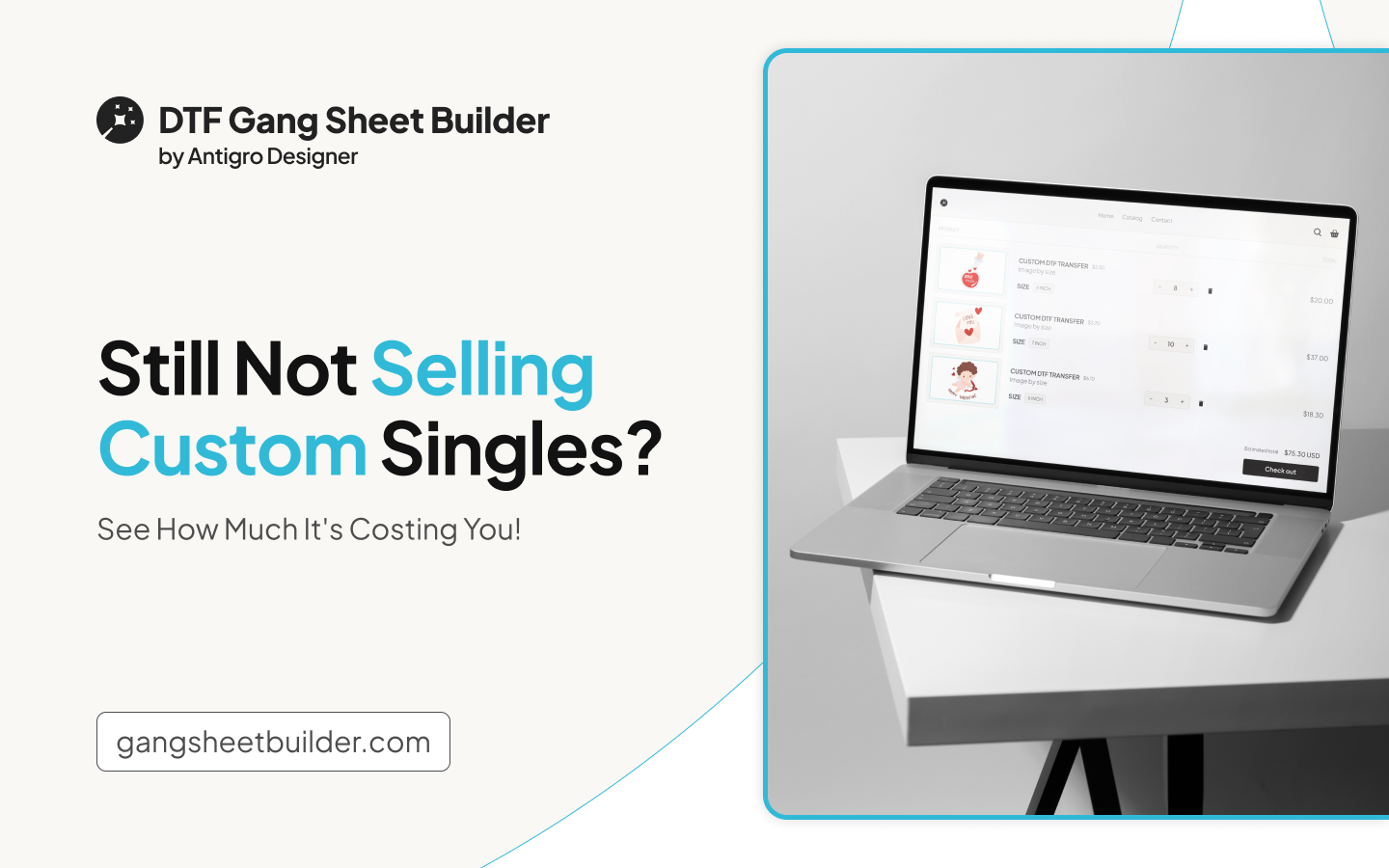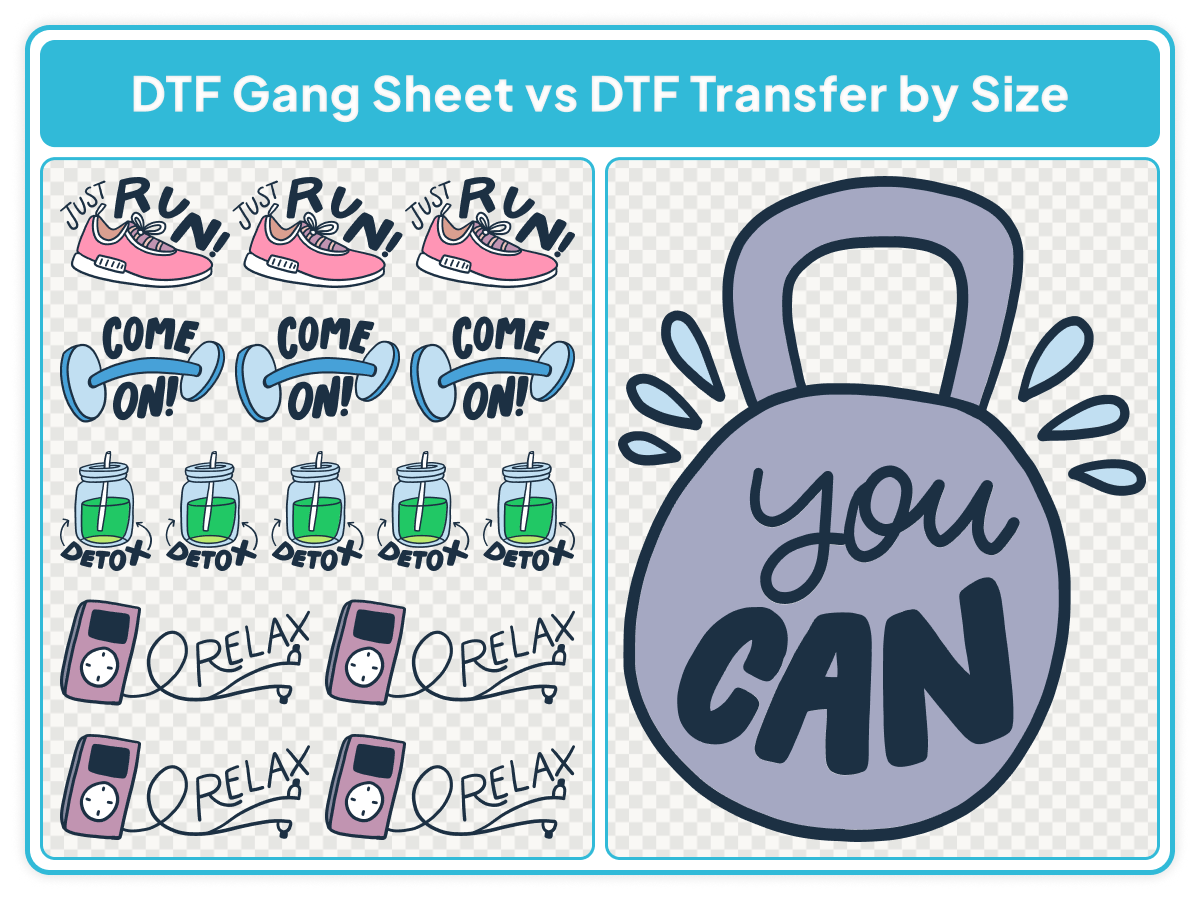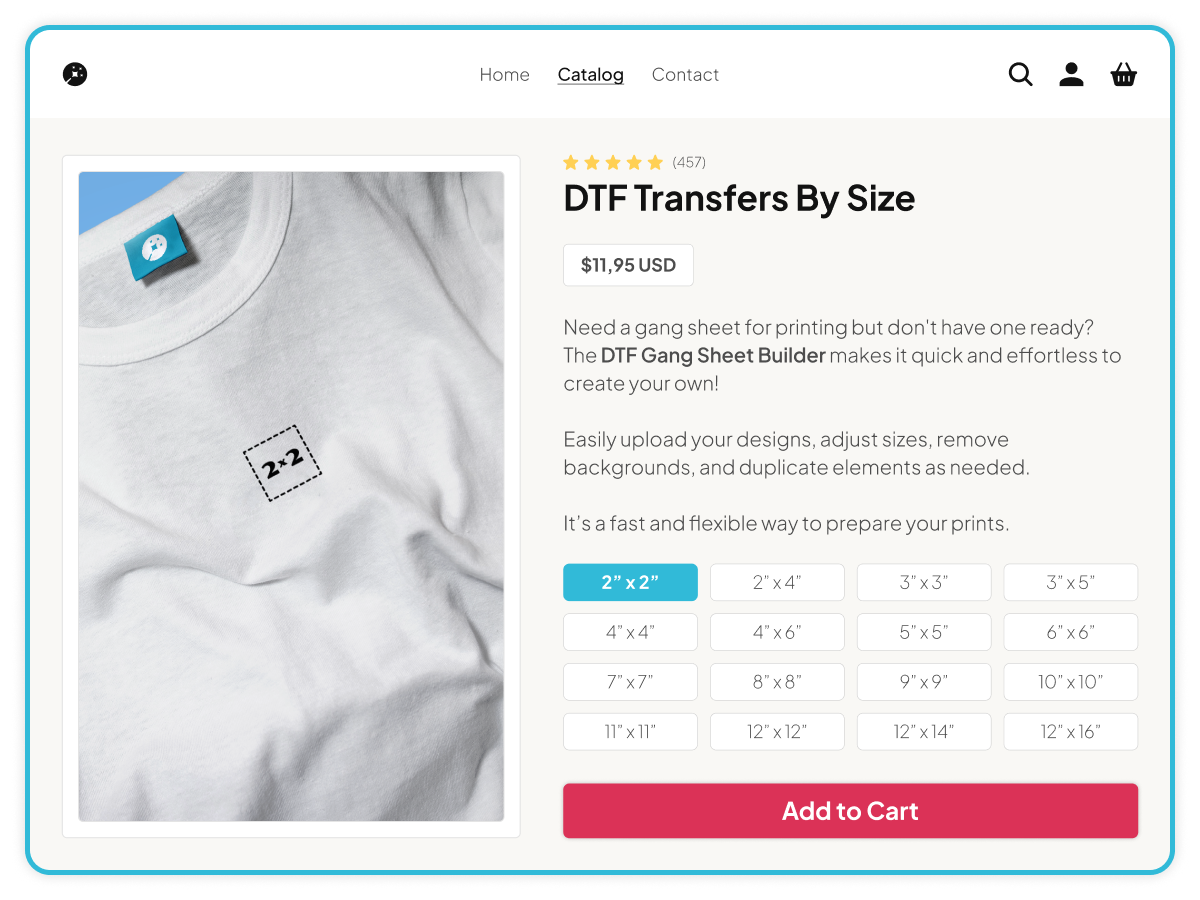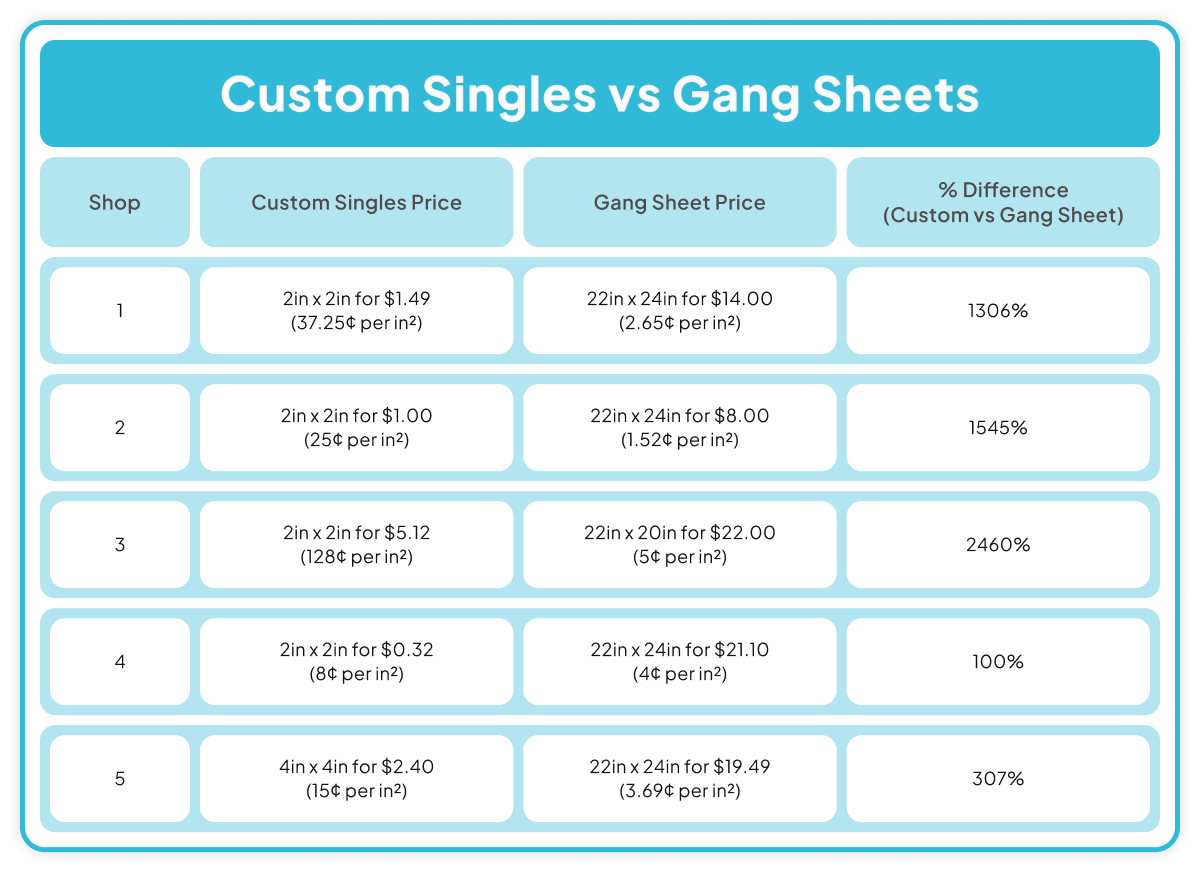
Custom Singles, also known as DTF Transfers by Size, are ready-to-use prints created using the Direct To Film (DTF) technique, sold in predefined, fixed sizes. Unlike large gang sheets, each DTF transfer by size is a single design intended for direct application onto garments or other textiles. The customer selects the desired size (e.g., 11″ x 11″, 4″ x 4″), uploads their artwork, and the producer prepares a precisely sized print ready to be applied with a heat press. This makes Custom Singles an ideal solution for individuals and businesses looking for simple, fast, and personalized results—without the need to design full gang sheets.
Why Customers Prefer DTF Transfers by Size Over Cheaper Gang Sheets
DTF transfers by size are growing in popularity among customers, mainly because of how easy they are to order. Unlike custom DTF gang sheets, where the customer has to organize multiple designs within a single layout, “by size” transfers simply require choosing a predefined size—such as 11″ x 11″ or 4″ x 4″—and uploading artwork. The process feels much like ordering any standard product: select a size, upload your file, and click “add to cart.” There’s no need to manually arrange designs on a large sheet, measure margins, or worry about optimizing space.

In contrast, ordering gang sheets requires the customer to prepare a single file with multiple graphics laid out precisely within a specific area (e.g., 22″ x 24″). This process demands more time. While gang sheets can be more cost-effective for bulk orders, DTF transfers by size offer a more convenient, faster, and user-friendly solution for small businesses and those printing individual designs.
Most Popular Sizes for DTF Transfers by Size

Among the most commonly ordered DTF transfer sizes, a few stand out for their practicality across different garment types. The 11″ x 11″ format is a staple for standard T-shirt fronts, providing a clean and balanced visual. For hoodies and oversized shirts, 12″ x 12″ is a frequent choice, while 11″ x 17″ works well for full-front designs that span the chest. Smaller sizes like 9″ x 9″ are popular for women’s apparel, and 3.5″ x 3.5″ or 4″ x 4″ are ideal for logos on pockets, sleeves, or hats. When aiming for impact on larger surfaces, 12″ x 16″ delivers, especially on hoodies. The 10″ x 10″ size remains a flexible go-to for many shirt styles, and 2.5″ x 2.5″ is commonly used for internal neck labels or subtle branding.
Statistics: How Much More Expensive Are Custom Singles Compared to Gang Sheets?
An analysis of pricing data from online stores reveals a significant difference in unit costs between Custom Singles and Gang Sheets in the DTF (Direct to Film) printing market in the U.S.

When comparing prices per square inch (in²), Custom Singles range from 8¢ to 128¢ per in², depending on size and supplier. In contrast, Gang Sheets are significantly more affordable, with prices ranging from 1.52¢ to 5¢ per in².
In some cases, Custom Singles are up to 2460% more expensive than Gang Sheets from the very same provider. On average, the price difference across reviewed examples exceeds 1100%, meaning that for the same print area, a customer might pay 10 to 20 times more when choosing individual transfers instead of gang sheets. Still, the simplicity of ordering and the lack of need for layout preparation make Custom Singles a consistently popular choice among smaller-scale buyers.
Despite the higher unit cost, Custom Singles offer ease of ordering and are ideal for customers who only need a few prints without having to prepare their own layouts. This convenience keeps demand steady, even with such large price gaps. Gang Sheets, on the other hand, require more involvement during the ordering process but are far more cost-effective—especially for larger orders—leading to significantly lower per-unit costs for customers.
If you’re worried that handling lots of small orders will be too time-consuming and put extra strain on your team — don’t be. The Admin Gang Sheet Builder takes care of it for you. It automatically processes Custom Singles orders, groups them, and generates print-ready gang sheets. This saves you time, eliminates the need for manual layout, and keeps the entire workflow smooth and hassle-free — even when you’re dealing with a high volume of small orders.
Ultimately, the choice between these two options depends on the customer’s needs, order volume, and willingness to handle layout preparation. However, to avoid losing potential customers and to maximize profitability, it’s smart for businesses to offer both options.
